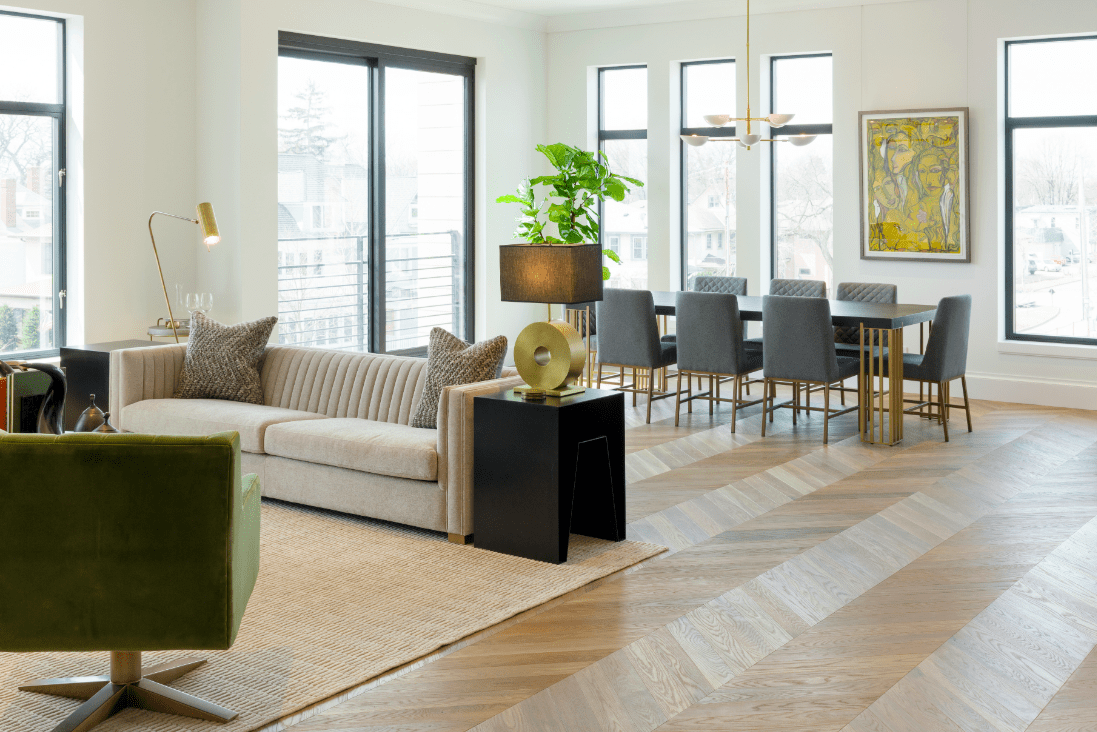Peter Connor has a thing for floors. He can spot the craftsmanship of WD Flooring in any space (commercial or residential) and any Instagram post (tagged or not). From reclaimed antique hardwoods to Scandinavian-inspired oiled and brushed finishes to steely gray hues reminiscent of Alaskan beaches to classic unfinished floors, each provides a stop-in-his-tracks moment to appreciate the important sustainability story underfoot.
It’s a story that has been unfolding since Connor’s great grandfather, WD Connor, inherited the company from his own father and transformed it into a beacon of sustainable practice. “WD was a true visionary,” says Peter, the fifth generation company president. “While we can honor him, we could never hope to achieve the amazing influence he had that changed the perspectives and culture of the forest products industry.”
You see, WD authored Wisconsin’s Forest Crop Law, which was based on the best practices he set forth for his own company. It became landmark legislation that rewards sustainable forestry and seeks to preserve this natural resource. It is now replicated in nearly every state with a timber industry.
Peter has made strides in sustainable production in his own right, holding fast to his family’s Laona, Wisconsin, timberland and sawmill. In the nineties, he and his team went after the mere 20% of the industry not cornered by the heavy hitters of lumber. “We did everything they weren’t willing to do,” he says. “We grew tremendously and became known as those crazy folks from Wisconsin making floors that, at the time, no one else made.” Which meant breaking away from typical strip oak floors and going after walnut and yellow birch.
That forward thinking carried Peter through the U.S. recession and into Europe, where he refocused his attention and worked with craftspeople who showed him just how beautiful hardwood flooring could be. “It was truly transformative,” he recalls. He then spent two years in and out of Minneapolis shops learning the intricacies of finish production, never letting go of the company’s sustainable virtues.
“We have more standing timber on our land than we did 100 years ago, and we have a zero-waste product,” he explains. Some 90% of the wood comes from a 90-mile radius of the mill, with the remaining 10% coming from Iowa, Indiana and Kentucky. The bark is used for fuel; sawdust helps dry the lumber and feeds wood pellet production; and larger wood chips are converted into packaging materials. And the lumber, of course, tells a story as unique as the building floors it covers.
From providing 200,000 feet of clear, certified sustainable maple for the San Francisco Museum of Modern Art to matching the antique floors of Boston’s Isabella Stewart Gardner Museum, WD Flooring projects feature a range of wood as varied as the spaces themselves. The Frank Gehry–designed Weisman Art Museum, the Walker Art Center, Orchestra Hall, and the homes of actors, athletes and musicians all tell a part of the story. “These spaces aren’t meant to be temporary,” Peter explains. “Nothing says longevity like a hardwood floor.”





